The supervising producer of the two Batman ’66 animated movies weighs in…

James Tucker, the co-writer and supervising producer of Batman: Return of the Caped Crusaders and Batman vs. Two-Face, is a Batman ’66 fan of the first order — and he’s put together for us a great list of his 13 Favorite Episodes.
Not only that, James was a guest with me on a special episode of John S. Drew’s Batcave Podcast, which you can listen to here or download on iTunes. James takes you behind the scenes on the Batman ’66 animated movies, with stories of working with Adam West, Burt Ward, Julie Newmar and William Shatner. He also discusses the possibility of more features, his own history with the show and drops some teases about Scooby-Doo and Batman: The Brave and the Bold, which is due in January. (James was one of the major creators on the beloved Batman cartoon.)

Return of the Caped Crusaders
Anyway, James’ list differs significantly from our Top 13 Episode Countdown — which you can find here — making it all the more interesting. He also took the idea of favorite episodes literally, distinguishing between the first and second half of a two-parter.
See how his list measures against ours — and yours:
—
By JAMES TUCKER
13. The Great Train Robbery. Overall, there isn’t much to this episode other than the final showdown fight between Batman and Shame, but it’s worth slogging through the rest of the episode (if you don’t want to just fast forward). It’s a doozy of a fight (“You’re a sham, Shame!”) by this show’s standards, silly but brutal in it’s own way. I’m a sucker for the rare times that Batman gets to fight alone in the series and this one actually takes place on the street, rather than a sound stage. This fight, in my opinion, is one of the few highlights of Season 3 (Batgirl and Eartha Kitt’s Catwoman being the other two). After Batman cleans Shame’s clock, we get a pretty nifty moral from Batman delivered right to camera: “…Good, even though it’s sometimes sidetracked, always, repeat, always triumphs over evil.”
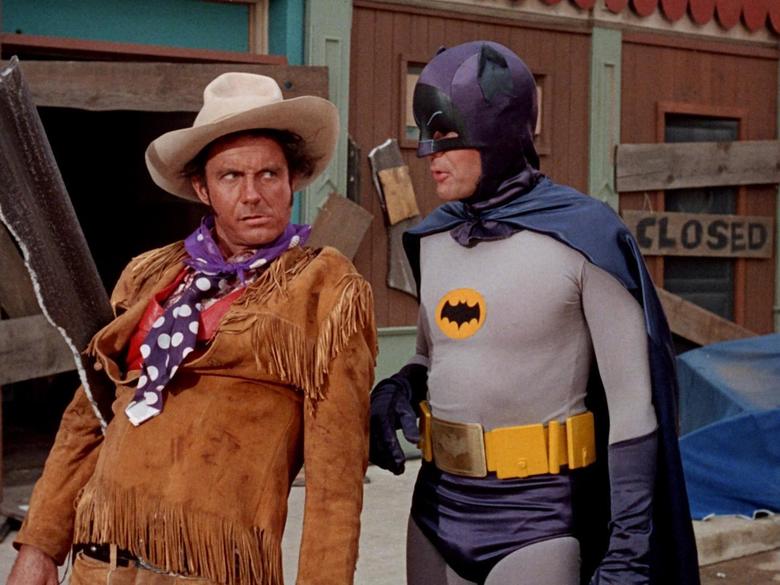
—
12. Wail of the Siren. This episode is one of the few highlights in Season 3. The Siren, as played by Joan Collins, is truly as evil as she is straight-up sexy, even a little tawdry. There’s a scene where she’s lounging by her harp that you can practically see up her dress! While most of the villainesses on the show would use humor to downplay their sexiness, Siren is much more vamp than camp. She seems actually more dangerous because she has an actual super power of sorts (her voice being able to control men) and I suspect the producers basically took Poison Ivy’s two schticks (plants and controlling men) and divided them among Siren and Louie the Lilac to much lesser effect. But Collins plays Siren as venal as well as voluptuous, and seems to luxuriate in her own evilness. (On a side note, Siren was definitely one of the influences that went into creating the Music Meister on the series Batman: The Brave and the Bold.)
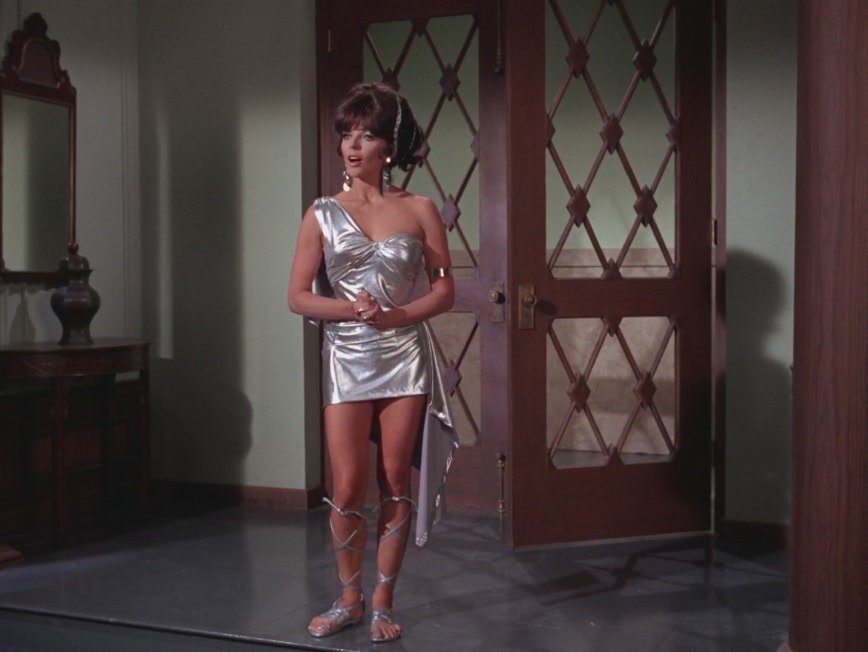
Another fun aspect of this episode is that Robin and Batgirl have to team up to save Bruce Wayne from the Siren. I would suspect this was the first instance of the beginnings of the Dick/Babs romance that later played out in the comics and animation. (Click here for more on that.)
—
11. Caught in the Spider’s Den. A not-so-guilty pleasure. I’ve read that Tallulah Bankhead’s Black Widow isn’t a fave of many fans of the show, but I loved the boozy snarl with which she delivered her dialogue. As Season 2 villains go, I’d have much preferred more Black Widow than the Archer, Minstrel or Puzzler episodes we got. Bankhead herself claimed she was camp before it was cool, so it’s no wonder she fits right into this episode. It’s not a great episode plot-wise, and there’d be no reason to even do it had Bankhead not agreed to appear.
Other fun bits: The décor of the Widow’s hideout is about as chic as any from the series — all the blacks and reds coordinate with her outfit, as well as her henchmen. Another is Burt Ward channeling Bankhead as Black Widow impersonating Robin — much like he did Jill St. John’s Molly in the series premiere — which is just odd. Later, Batman singing Gilbert and Sullivan is odder! Best scene: Batman pours Black Widow a glass of milk. She takes a sip and almost does a spit take, clearly used to stronger stuff, and says with perfectly dry delivery, “So this is milk…”

—
10. Batman’s Waterloo. Victor Buono’s performance as Tut is particularly good in this one. His tongue-twisting “Royal Oil Boiling Room” bit, his overall pining for Lisa Carson (the radiant Lee Meriwether), and his scenes on the phone with Batman and Lisa’s father are hilarious. Other fun bits: Batman wearing rubber surgical gloves over his gauntlets, Batman reacting to Tut’s (off-screen) profanity (“Oh, such language!”) and Batman coming to the rescue using the Bat-tering ram on the Bat Cycle. After the fight, once Tut has reverted to the remorseful professor, Batman speaks directly to the camera (“No man is above the law, and no man is below it.”). I loved when the actors would turn to the camera and directly address the audience; that seems very old-school comic book to me and was the reason I wanted the last scene of the last episode of Batman: The Brave and the Bold to end with Batman addressing the audience directly too.
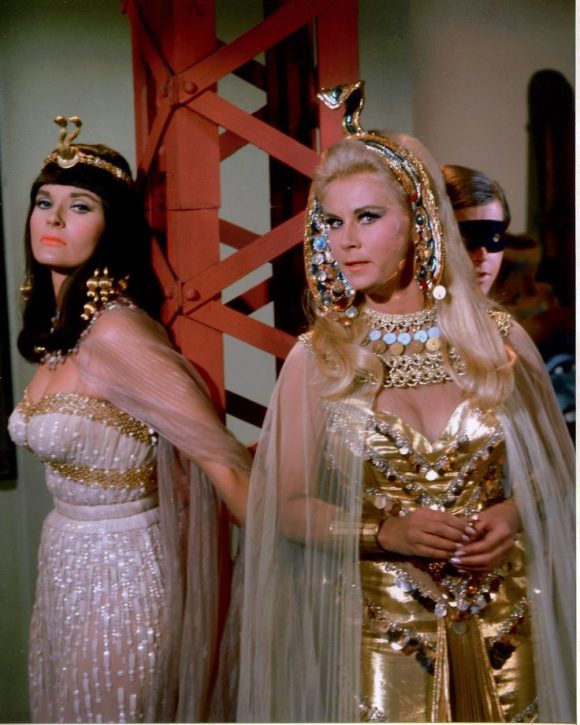
—
9. The Dead Ringers. This one’s a guilty pleasure to be sure, but there’s lots to enjoy. Liberace is hilariously good at being bad in this and never boring. The fact that he’s been tasked with playing himself (basically) and his evil twin would be heavy lifting even for a good actor. But Liberace’s limited range as an actor somehow fits right into the broadly comedic tone of the second and third seasons. Had he been better, I think it might’ve made the episode merely awful instead of gloriously campy.
Other things I liked: The piano-player roll puncher death trap was right out of a Dick Sprang panel from Batman’s ’50s adventures and Batman’s escape from it singing certain notes, was right out of a Bill Finger script. Chandell’s molls with their deadly bagpipes were really menacing and kind of spooky in certain scenes. This is also one of the few episodes where Aunt Harriet has a sizeable role in the plot and is quite plucky when facing evil twin Harry pretending to be Chandell.
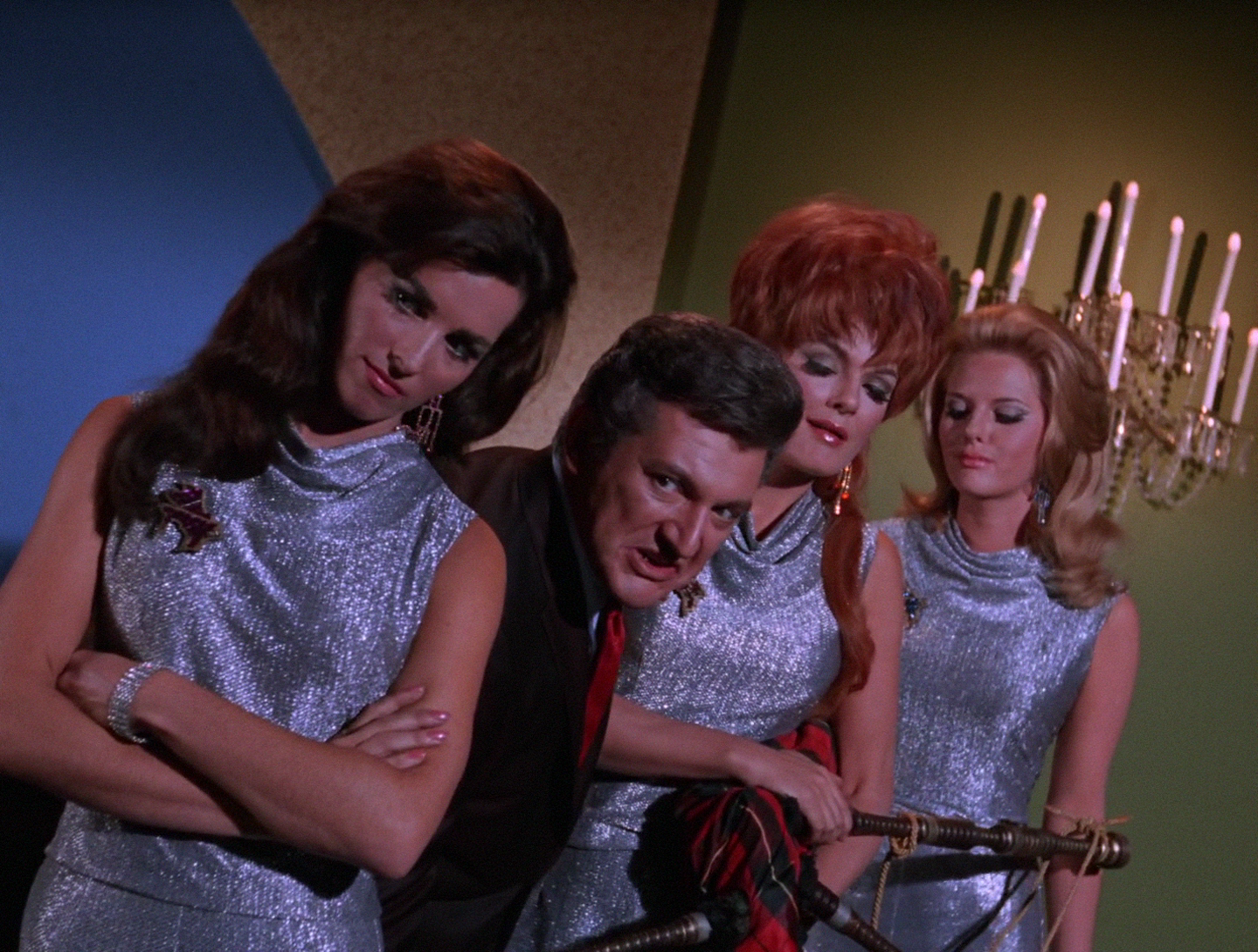
Another cool bit: After Harry has captured Aunt Harriet and Alfred and put them in a giant trunk, he uses a machine gun to blast the trunk to bits! This always seemed shockingly violent for a Season 2 episode, especially for the split second we think they’ve actually been killed (until we see that Batman and Robin were actually in the trunk behind the bat-shield!).
—
8. Batman Makes The Scenes. This is one of my favorite Penguin episodes. Burgess Meredith’s commitment to making Penguin as gleefully mean-spirited as possible was always fun to watch. Truth be told, Meredith is the only draw for most Penguin episodes as the plots overall were pretty forgettable, but the actor sold them nonetheless. But in this episode, he’s particularly despicable because he’s kidnapped and brainwashed Alfred. For some reason, that seemed extra evil to my 6-year-old self.
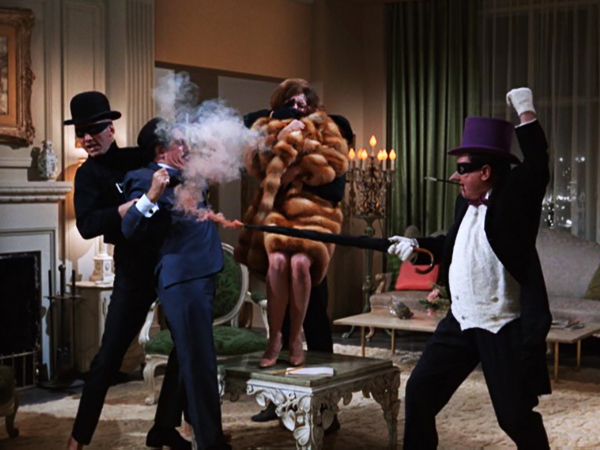
—
7. The Pharaoh’s in a Rut. Victor Buono’s delicious debut as King Tut, a villain I didn’t like as a kid but grew to love as an adult. His performance is indeed camp but also hilariously subversive in his ad-libbed double entendres (that reminds me a lot of W.C. Fields in their delivery). Besides Buono, the other highlight of this episode for me was Batman pretending to mindlessly do the Batusi at Tut’s command, only to have it become a Bat-fight. All the Bat-fights were half dance/half fight but this one took that to the extreme and I dug it.
—
6. Give ‘Em the Axe. This is one of my favorite Riddler episodes. He’s even more demented than usual and the way he says, “Lost treasure of the In-Cas!” is hilarious to me even now. The best part of the episode is the finale with Robin tied to a torturer’s rack, having been captured by the Riddler’s goons. Burt Ward really nails Robin’s tenacity and loyalty to Batman in this scene. Then we get a great comic-book touch (this series had a few of them, despite what ’66 haters like to think): the bat shadow on the wall, terrifying the crooks, and a terrific Bat-fight where Batman takes on the Riddler and his goons solo. I’m a sucker for the times when Batman has to fight alone in the series.
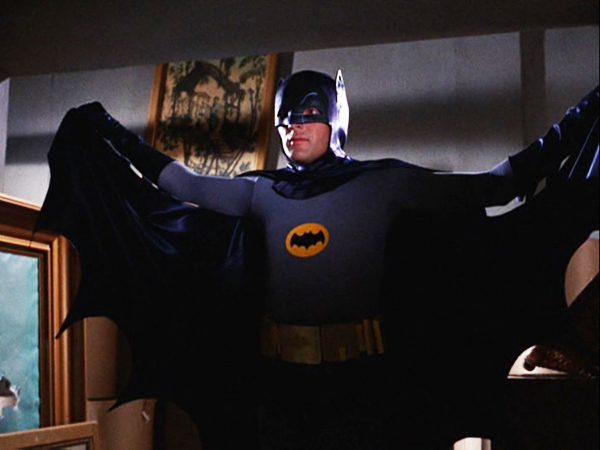
—
5. Better Luck Next Time. The second half of Catwoman’s debut episodes, introducing Julie Newmar in the role is the main draw here. She gives Catwoman a sultry, slightly quirky quality that would be played up to neurotic comedic effect in later Catwoman episodes. The deathtrap she has Robin in — suspended over man-eating tigers — is one of the series’ best, as is the fight Batman has with Catwoman’s goons while rescuing him. The finale of this episode is the most memorable for me, with Catwoman plunging to her assumed death down a bottomless pit (I actually felt sorry for her). Her falling or almost falling to her death would happen a few times more over the next season.
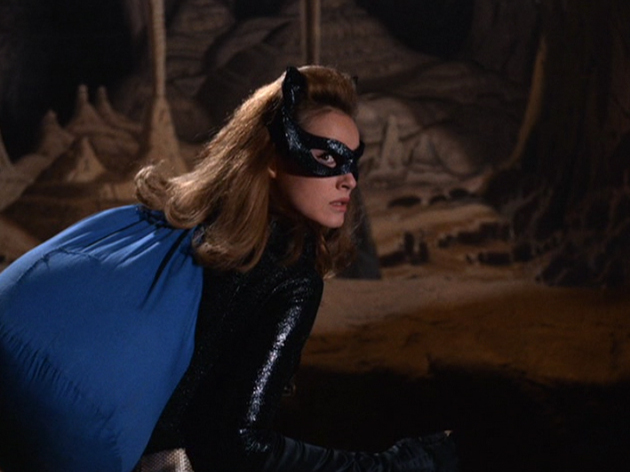
—
4. True or False Face. False Face is one of the best villains of the series but unfortunately only used for a single two-parter. The disturbing masks he wears still unnerves my inner 6-year-old. The shots of False Face dressed as a little old lady, and then later when he’s hiding inside the booby-trapped candy machine, are still nightmare fuel 50 years later. We used the gimmick of him always being in a different costume from scene to scene when conceiving the Music Meister for Batman: The Brave and the Bold. Blaze was also one of the more interesting and formidable molls in the series.
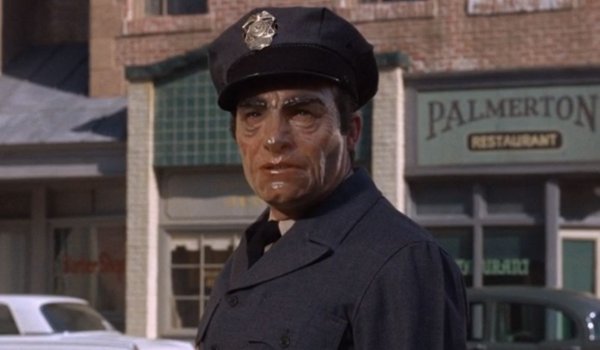
—
3. The Joker Goes To School. This is my second favorite Joker episode. There’s something truly creepy about Joker sneaking into a high school that freaked me out as a kid, and still does, actually. There’s a really classic down shot of Joker playing solitaire (with what appears to be all Joker cards) in his hideout that really seems as if it leapt from the pages of one of Joker’s earliest appearances. This one has lots of Joker gimmicks, like the jukebox with a machine gun and the electric chairs rigged to the slot machine, which was an inspired death trap. Unfortunately, there’s no Bat-fight in this first half, but you almost don’t notice.
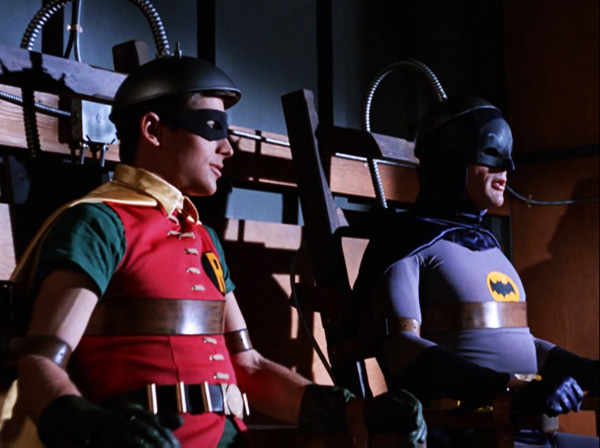
—
2. Batman Stands Pat. I’ve always been a fan of David Wayne’s Mad Hatter. His Jervis Tetch is campy in the extreme, but he sells the “mad” part of Mad Hatter quite nicely. He’s probably the first bad guy in Season 1 who really is played extra broadly and for comedy, as most of the other special guest villains were a bit straighter. This episode was also based on a comic-book story and has a long, well-choreographed fight in Hatter’s hat factory that’s truly thrilling.
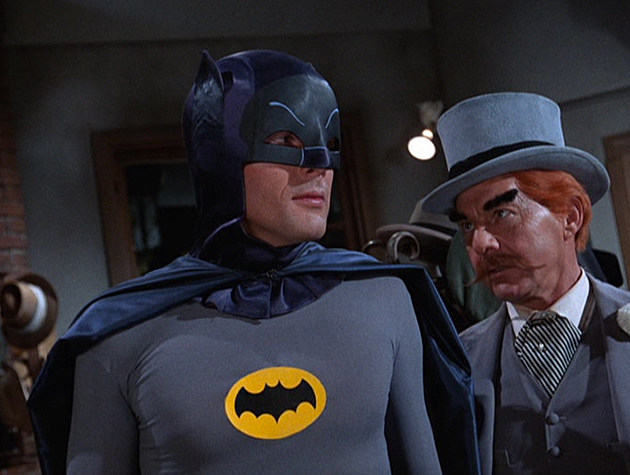
—
1. Batman is Riled. I like this one because it’s the Joker’s first appearance in the series and was based on an actual story from the comic books, The Joker’s Utility Belt. Romero’s Joker gets a bum rap. I’ll put his performance here up against any live-action Joker. The scenes where he’s unmasked in the Pagliacci costume or, later, when he invades the television studio and puts his pasty mug right up to the camera, really horrify, mustache or not. For my money, he also had the best laugh of the live-action incarnations. I thought the episode was well photographed with lots of depth and shadow and there are a few great night scenes that really gave Season 1 a more noirish flavor. Lastly, the Bat-fight at the end of the episode, with Joker threatening to behead the Dynamic Duo, was bananas!
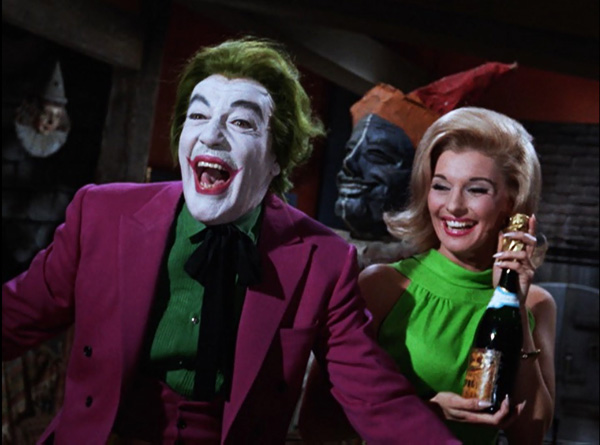
—
MORE
— James Tucker on The Batcave Podcast: Click here.
— REVEALED! The Secrets Behind Batman: Return of the Caped Crusaders: Click here.
— REVEALED! The Secrets Behind Batman vs. Two Face: Click here.

November 28, 2017
I would have to agree with nearly every pick of Mr. Tuckers! I enjoy all of these same episodes for most of the very same reasons he gives. The only addition I make is slipping the Zelda episodes in there, and that’s because I have always simply loved the fact that it is a complete standout in the series: No bat-fight, Aunt Harriet kidnapped, gangsters shooting at the Dynamic Duo while hiding in the Egyptian mummy casks…
February 19, 2018
I agree about the Zelda episodes as well. That was also based on a comic book story. And I remember enjoying Black Widow even as a kid because Talullah Bankhead was in the same age bracket as my grandmother, and the story and visuals were so great!!! And the first Catwoman outing’s end reminded me of what happened to Molly in the premiere episode as well. Both of those demises had an impact on me as a kid when I first saw them 52 years ago.
November 30, 2017
I loved the first season King Tut episodes, because of the fact that Tut was the first villain created for the series. I loved the plot, Bat-trap, and that silly Batusi!
I also loved the Joker/Penguin 3-parter episodes. The constant chasing around, the fight in the Batcave, and especially that giant clam Bat-trap!
November 3, 2018
Tucker makes some excellent points about Joan Collins’ portrayal. The ‘more vamp than camp’ comment is spot-on, and one can make the argument it’s almost a proto-Alexis with Joan’s portrayal. I believe she had to play it somewhat straight, as she did, to make such a character believable.